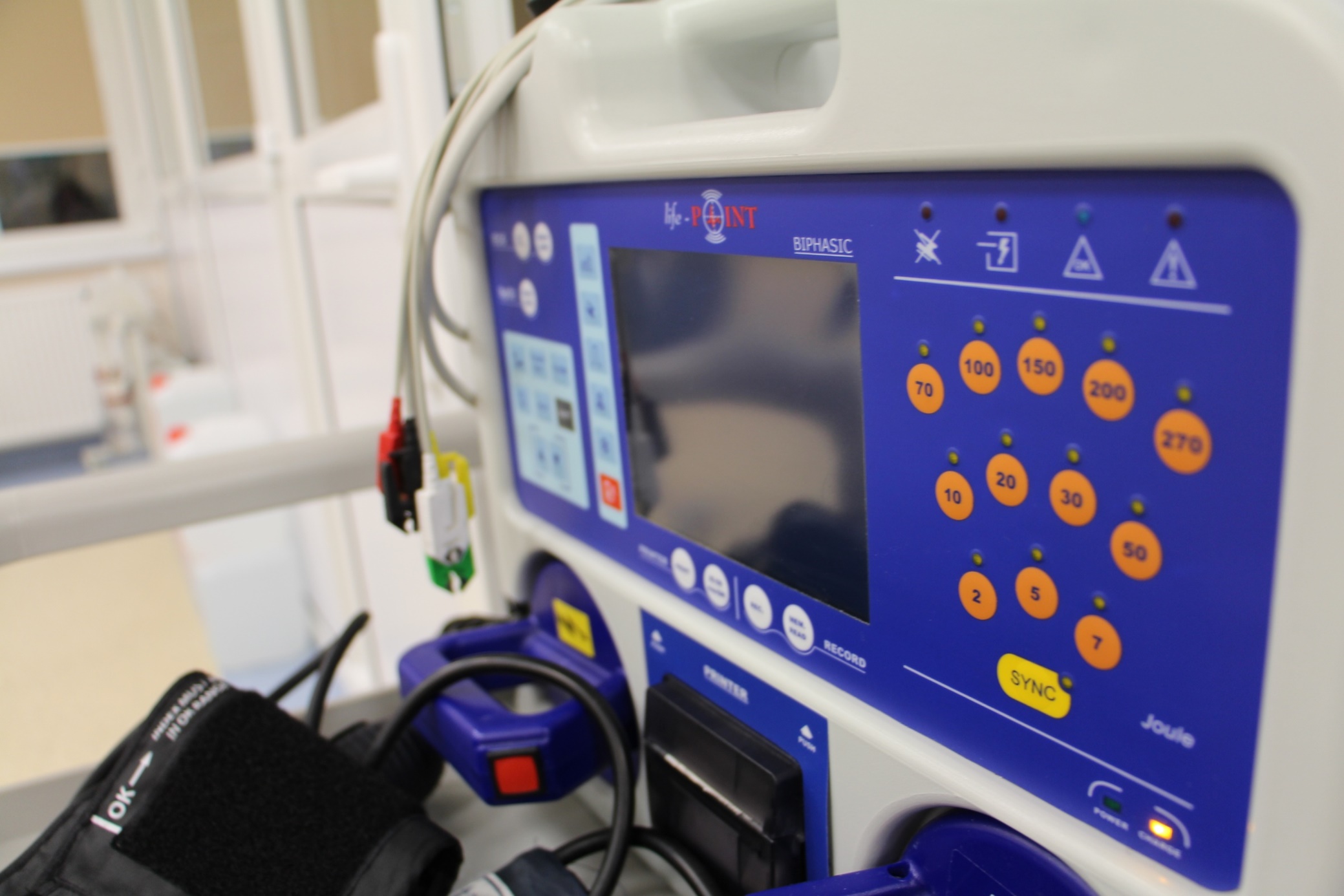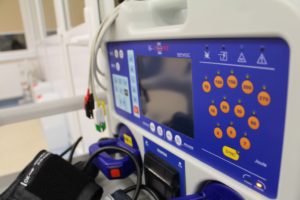
Process Mapping – problem solving

Treatment, care, rehabilitation and surgery interventions are most common processes in hospitals in favor of patient. Each service can be covered commercially or be regulated by a public payer. Lots of standards, procedures and algorithms available in a medical unit has it single activities and short processes described but whether or not, the patient makes its direct target. In order to keep patients documentation and performed activities coherent and unified, thereby follow patients safety throughout complex processes, a visual map pictures it all as one simple and intelligible set. And so, we have clarified conversation topics, assignments, contributors, person that next receives patient during a particular process, different stages to easily navigate through processes, documents to be filled, decision-making scheme and types and levels of risks.
Patient is the main constituent of the clinical process in medical facility. It allows us to perform these processes. A hospital, in turn, forms an institution that is designed to provide patient treatment with the use of specialist personnel and equipment. Patient can’t be defined as a problem. All processes and infrastructure of a hospital should be organized in such way to treat the patient as the most important person and let him smoothly pass through the treatment process with no interruption, letting him collaborate with his doctor.
Where is Gemba?
Re-engineering makes the chance to improve any process. Any process should be well understood and a mapped – value stream mapping (specify all activities that need to be done), define persons responsible for a given step and how long does it take to perform each of them, evaluate the waiting time of each step. Usually, processes are complex, steps are repetitive, both patient and staff perform unnecessary movement, each of them wait and face the problem of miscommunication. It can be shortened by re-designing the process and make it smooth for the patient who follows the quality with no waiting instead. The results are simple – shortened duration of the process, reducing the amount of wasted materials (e.g. medicines, disposable materials), reduced error risk, improvement of personnel work quality and patient’s well-being. If every employee knows the process in which he participates it becomes possible for him to improve it. Thanks to the knowledge of the process each participant (head physician, nurse, patient, medical caretaker) will know at what stage is he on, what resources are necessary for particular stage, what is the order of the stages, what shouldn’t be overlooked. It will not only improve activities but also eliminate process bottlenecks causing queues which are hard to avoid and prolong the whole process.
Advantages of process mapping
The value added is primarily the implementation of service in the shortest possible time (it’s not about the fastest performance of the service but the elimination of unnecessary vulnerabilities like waiting, unnecessary walking from the front desk to the doctor and back). Correct surgery creates another value added – no complications, repetitions, medication, patient monitoring, performing X-RAY or MRI, a doctor’s advice who will resolve doubts. Gemba is where the value is created. In manufacturing it will be a production hall, an actual assembly line, packaging machine. In hospital it may refer to operating theatre, treatment room, x-ray, it’s not one fixed place.
Person engaged in clinical process optimization in a medical facility has a hard task to tackle. In manufacturing there is no problem to walk up to the assembly line with a stopwatch and measure production time of 100 pieces of sockets produced within 60 minutes. It’s not that simple in a hospital because there is no precisely scheduled working day as in the manufacturing production order. “Acute cases” sometimes interrupt all day work flow and absorb most of the staff resources; If two patients wont show up at the scheduled appointment time the rest of the visits are consecutively delayed. The medical services strongly depend on the patient case. Clinical process can be standardised but it is important to provide more flexibility, process boundaries have to be flexible because the treatment process is dependant on patient condition and doctor’s decision. Standardization helps doctors, the process is specified and transparent and staff feels safe with graphically presented process, because they can quickly and easily check what stage are they on or simply what steps to perform in the next stage.
What is the purpose of mapping a process?
The goal is to visualize the current process flow and to propose future process map which will be error-free. At the beginning, the framework should be determined – the beginning, the end and the customer. Suggest an initial flowchart for the selected process consisting of a major, necessary steps. Such a introductory process draft will enable to upgrade the schema of activities dedicated to a specific group of people-customers.
Mapping not only allows health managers to get acquainted with the process but also creates a standard for specialists and other personnel. It becomes a kind of “roadmap” for patients.
COOKIE POLICY
At Lean Process Katarzyna Złotowska, we use cookies to ensure you have the best experience while browsing our website. By agreeing to all cookies, you allow us to enhance your comfort while navigating our site and tailor our offer to your needs.
You can change your choice at any time by clicking on the Customize option. To learn more, please refer to our Privacy policy.
| Cookie | Duration | Description |
|---|---|---|
| cookielawinfo-checkbox-advertisement | 1 rok | Set by the GDPR Cookie Consent plugin, this cookie records the user consent for the cookies in the "Advertisement" category. |
| cookielawinfo-checkbox-analytics | 11 miesięcy | Set by the GDPR Cookie Consent plugin, this cookie records the user consent for the cookies in the "Analytics" category. |
| cookielawinfo-checkbox-functional | 11 miesięcy | The GDPR Cookie Consent plugin sets the cookie to record the user consent for the cookies in the category "Functional". |
| cookielawinfo-checkbox-necessary | 11 miesięcy | Set by the GDPR Cookie Consent plugin, this cookie records the user consent for the cookies in the "Necessary" category. |
| cookielawinfo-checkbox-others | 11 miesięcy | Set by the GDPR Cookie Consent plugin, this cookie stores user consent for cookies in the category "Others". |
| cookielawinfo-checkbox-performance | 11 miesięcy | Set by the GDPR Cookie Consent plugin, this cookie stores the user consent for cookies in the category "Performance". |
| CookieLawInfoConsent | 1 rok | CookieYes sets this cookie to record the default button state of the corresponding category and the status of CCPA. It works only in coordination with the primary cookie. |
| viewed_cookie_policy | 11 miesięcy | The GDPR Cookie Consent plugin sets the cookie to store whether or not the user has consented to use cookies. It does not store any personal data. |
| Cookie | Duration | Description |
|---|---|---|
| ClientId | 1 rok | The ClientId cookie is a short file stored in the browser that contains a unique client identifier. It is often used in the context of online services or applications to track and identify users based on their client. The ClientId cookie helps tailor the user experience and provides anonymous usage statistics, but it does not contain any personal information or data. |
| OIDC | 6 miesięcy 1 dzień | The OIDC cookie is a file stored in the browser during the login process using the OpenID Connect protocol. It ensures secure authentication and authorization of the user across various websites or applications. Thanks to this cookie, the user can remain logged in and use the available functions. |
| OutlookSession | sesja | OutlookSession cookie is a file stored in your browser while using the Outlook service. It is used to provide a personalized experience and identify your session. Thanks to this cookie, you can easily navigate the Outlook service and use its various features. |
